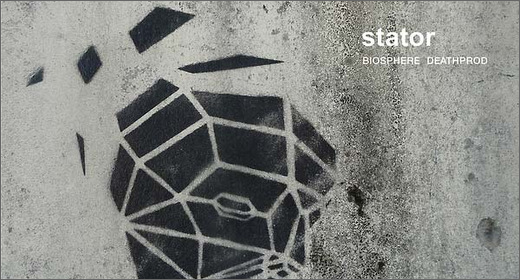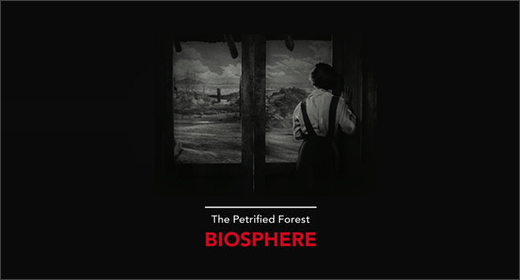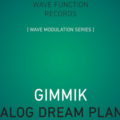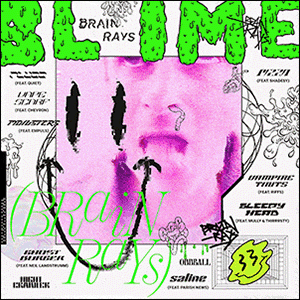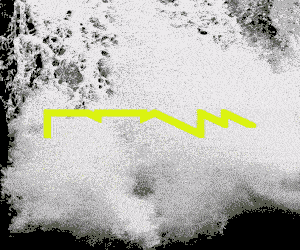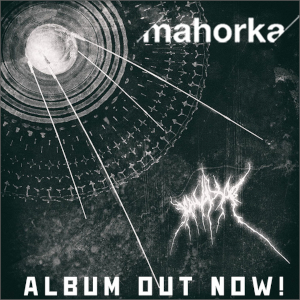Typically situated on or near the shores of Japan, frequently adjacent to or in the shadow of a hill or craggy land mass, Jenssen has managed to capture perfectly the slightly sinister, otherworldly stillness of these seemingly abandoned or silent sites and structures.
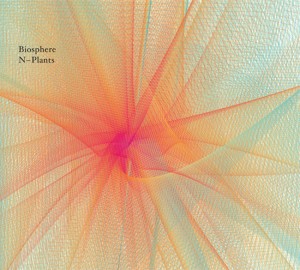
[Release page] It’s been just shy of five years since the jazz-flecked Dropsonde – the last proper standalone Biosphere album – with nothing but a live recording and various minor projects since, and patience for the next big thing have been wearing thin. Then seemingly from nowhere Touch drop N-Plants on us. You’ve got to hand it to Geir Jenssen – can anyone honestly say they saw this coming down the line?
The reason for the surprise release soon becomes apparent. In early February 2011, Jenssen began working on an album inspired by the architecture, the location and the potential radiation dangers of specifically Japanese nuclear power plants and reactors, so many of which are situated in beautiful locations, near hilly, rocky areas or right on the shore in earthquake-prone areas. One month later, a terrible tragedy struck Japan as a massive earthquake created the tsunami that in turn triggered the Fukushima-1 nuclear disaster.
The first thing you should probably do when approaching N-Plants is try to forget any notions of prediction that this unfortunate coincidence might elicit, and not to read anything into the strange pun that is the album’s title lest it colour what is to follow. We’re given very little background on Jenssen’s approach to the composition of N-Plants other than it was achieved in an amazingly short time. Did he study photographs, plans or the local geography for as reference points or inspiration? Is each track so titled because it is an attempt to sonically represent a specific power plant, reactor or its surroundings? How much was based on the physics of nuclear power and radiation?
The style of N-Plants is also surprising. Biosphere’s modern minimal aesthetic is combined with beat-work, the old-school, icy tones and warm ambient house of the days of Patashnik and in particular Microgravity. On first listen it might seem a little lightweight, but actually Jenssen’s trademark care and attention to precise production and sound design is very much in evidence. Every beat is precisely drawn, every bass drum and pad sculptured to maximum, room-vibrating effect.
Looking at some of the images of the various nuclear power plants located around Japan it becomes abundantly clear why Jenssen chose them as the seed of inspiration for an album: the sense of isolation and the unusual architecture all resonate with Biosphere’s other chosen sources of inspiration – arctic wastelands, deserted glaciers. Typically situated on or near the shores of Japan, frequently adjacent to or in the shadow of a hill or craggy land mass, Jenssen has managed to capture perfectly the slightly sinister, otherworldly stillness of these seemingly abandoned or silent sites and structures.
N-Plants also scans like a potted history of trademark Biosphere sounds as elements, textures, drones and bass lines can be heard from almost every era. “Sendai-1” kicks things off with a typically languid Biosphere introduction: looped, electricity-grid whirring and high-pitched hum build into bowled, oriental percussion. In “Shika-1” (huge blocks of powder blue with white stripes) there are a few moments of dusty, hissing pads that recall Substrata or Cirque before a two-note loop introduces the first real percussion of N-Plants along with a resonant bass and glassy clinking. “Jōyō” (a test reactor) goes for Patashnik era suspense filled, icy washes and hiss.
There’s a lyrical, waltzing quality to the classical chord progressions of “Monju-1” (a characteristic that “Monju-2” lacks) and a beguiling female Japanese voice whispers, as if telling a child a secret. And for those who have been fans of Biosphere since the days of Microgravity, “Genkai-1” (a rather unassuming looking plant situated very close to the actual town) is a revelatory pay-off, a true return to those warm sounds, ambient-house percussion and supple bass tones, and the album’s most overtly melody driven track.
N-Plants is an expectation-defying release from Biosphere, so much so that many are speculating that another album from Jenssen is soon to follow, one that has been gestating for far longer. Nevertheless, N-Plants is no minor work from the artist by any stretch of the imagination, providing a welcome and refreshing change from his more austere output, so why not indulge in this audio tour of nuclear Japan.
Available now on CD. A deluxe gatefold vinyl edition is also now available on Biosphere’s own Biophon label.
N-Plants is out now on Touch. [Release page]










